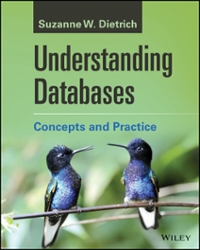Answered step by step
Verified Expert Solution
Question
1 Approved Answer
Your final project for LSCI 1 1 9 / 2 1 9 will be a brief squib ( a short paper ) , which is
Your final project for LSCI will be a brief squib a short paper which is due June th at
: pm This paper should be at least four pages, and should consist of the following
components:
Create or find a dataset that has some interesting property with respect to theory
comparison. Some of the properties weve focused on in class so far are:
a Opacity counterfeeding counterbleeding
b Lookaheadsour grapes
c Myopia the opposite of lookahead
d Multisite optionality
e Conspiracies
Perform an analysis of this data in at least two of the frameworks listed below.
a SPE with simultaneous rule application
b SPE with directional iterative rule application
c Optimality Theory
d Harmonic Serialism
e Harmonic Grammar covered in Week
f Maximum Entropy OT covered in Week
Your analyses should follow the same format as the assignments: that is clearly define your
rulesconstraints choose derivationstableaux that demonstrate necessary
orderingsrankings
Compare the analyses in the two frameworks. For example:
a Are both frameworks able to capture the patterns in the data eg for an opaque
pattern, can SPE and OT both predict the correct outcomes
b Do you need to make certain assumptions to account for the data under one of the
models eg did you need to use conjoined constraints to make an OT analysis of an
opaque phenomenon work? Some other type of constraint we havent discussed in
class?
c If both analyses work, can you think of any reasons to prefer one over the other?
In essence, this is like the homework assignments but youre producing two analyses of a single
data set and comparing them.
Tips on finding data
There are a few options for where you can find an appropriate data set:
Put a new one together based on a language you or someone you know speaks or based on
reference materials This is the most work, but likely to be the most interesting! If you are
interested in this and dont have a good idea of how to approach it message Connor for
help. This is a great option if youre interested in grad school or you are currently a grad
student
Find an existing dataset that we havent talked about in class by looking at papers,
textbooks, etc. Ive uploaded Bruce Hayes phonology textbook, which has some examples
of several relevant problem sets if you search for terms like counterfeeding etc.
Use a dataset that we have talked about in class. The key thing here is that you cannot
compare models we have already explicitly compared in class: so eg we compared
SPE and OT analyses of the Lena Asturian data set in class, so this would not be appropriate
for your squib.
A few concrete suggestions:
Take a subset of the Uyghur data from HW analyze it in OT or some other framework
and compare against your rulebased analysis. If you didnt do well in HW this could be an
opportunity to revise your analysis.
The Palauan data from Lecture pdont worry about accounting for stress position
The Polish data from Lecture pp
The Southern Kikuyu data from Lecture ppwe already compared this in SPE and OT
but HS could be interesting
Tianjin tone sandhi from Lecture pp
Collaboration and citation
As usual, its fine to collaborate so long as you a write up your individual paper; and b list your
collaborators at the top.
If you rely on existing work for either datasets or details of your analysis, you must cite your
sources. Its fine to use elements of a published analysis in your writeup but you need to be clear
when youre doing so vs when youre proposing your own analysis
Step by Step Solution
There are 3 Steps involved in it
Step: 1

Get Instant Access to Expert-Tailored Solutions
See step-by-step solutions with expert insights and AI powered tools for academic success
Step: 2

Step: 3

Ace Your Homework with AI
Get the answers you need in no time with our AI-driven, step-by-step assistance
Get Started


